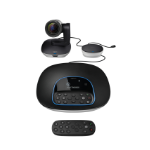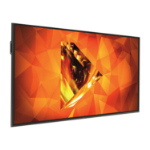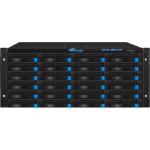Must-Have Hardware for a Professional Business Office


Establishing a professional office environment is fundamental for fostering productivity, collaboration, and a positive brand image. But beyond aesthetics, equipping your office with the right hardware is crucial for smooth operations and efficient workflows. This blog delves into the essential hardware elements for any professional business office, empowering you to create a functional and well-equipped workspace.
Building the Foundation: Core Hardware Essentials
Computers and Laptops: Desktop computers or laptops are the backbone of most office work. Consider factors like processing power, memory capacity, and operating system compatibility with your business software.
Building the Foundation: Core Hardware Essentials
Computers and Laptops: Desktop computers or laptops are the backbone of most office work. Consider factors like processing power, memory capacity, and operating system compatibility with your business software.
-
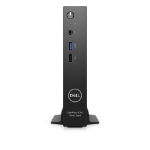 DELL OptiPlex 3000 2 GHz Wyse ThinOS 1.1 kg Black N6005Special Price £338.42 £406.10 Regular Price £436.09Out of stock
DELL OptiPlex 3000 2 GHz Wyse ThinOS 1.1 kg Black N6005Special Price £338.42 £406.10 Regular Price £436.09Out of stock -
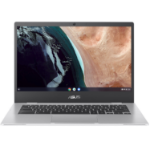 ASUS Chromebook CB1 CB1400CKA-EK0039 Intel® Celeron® N N4500 35.6 cm (14") Full HD 8 GB LPDDR4x-SDRAM 64 GB eMMC Wi-Fi 6 (802.11ax) ChromeOS SilverSpecial Price £255.84 £307.01 Regular Price £333.41
ASUS Chromebook CB1 CB1400CKA-EK0039 Intel® Celeron® N N4500 35.6 cm (14") Full HD 8 GB LPDDR4x-SDRAM 64 GB eMMC Wi-Fi 6 (802.11ax) ChromeOS SilverSpecial Price £255.84 £307.01 Regular Price £333.41 -
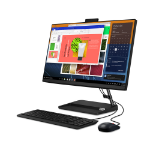 Lenovo IdeaCentre AIO 3 24ALC6 AMD Ryzen™ 3 5300U 60.5 cm (23.8") 1920 x 1080 pixels All-in-One PC 4 GB DDR4-SDRAM 512 GB SSD Windows 11 Home Wi-Fi 6 (802.11ax) BlackSpecial Price £413.00 £495.60 Regular Price £504.00
Lenovo IdeaCentre AIO 3 24ALC6 AMD Ryzen™ 3 5300U 60.5 cm (23.8") 1920 x 1080 pixels All-in-One PC 4 GB DDR4-SDRAM 512 GB SSD Windows 11 Home Wi-Fi 6 (802.11ax) BlackSpecial Price £413.00 £495.60 Regular Price £504.00 -
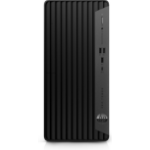 HP Pro 400 G9 Intel® Core™ i5 i5-13500 8 GB DDR4-SDRAM 256 GB SSD Windows 11 Pro Tower PC BlackSpecial Price £651.37 £781.64 Regular Price £837.48Out of stock
HP Pro 400 G9 Intel® Core™ i5 i5-13500 8 GB DDR4-SDRAM 256 GB SSD Windows 11 Pro Tower PC BlackSpecial Price £651.37 £781.64 Regular Price £837.48Out of stock -
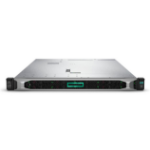 HPE ProLiant DL360 Gen10 server Rack (1U) Intel Xeon Silver 4208 2.1 GHz 16 GB DDR4-SDRAM 500 WSpecial Price £1,898.40 £2,278.08 Regular Price £2,440.80
HPE ProLiant DL360 Gen10 server Rack (1U) Intel Xeon Silver 4208 2.1 GHz 16 GB DDR4-SDRAM 500 WSpecial Price £1,898.40 £2,278.08 Regular Price £2,440.80 -
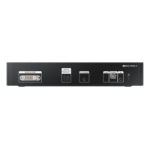 Samsung SBB-SNOWRAF/EN Thin Client 1.1 kg BlackSpecial Price £372.50 £447.00 Regular Price £480.00
Samsung SBB-SNOWRAF/EN Thin Client 1.1 kg BlackSpecial Price £372.50 £447.00 Regular Price £480.00 -
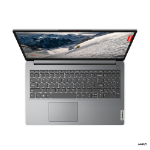 Lenovo IdeaPad 1 15inch Ryzen5 8GB 256GB Laptop - Cloud GreySpecial Price £415.78 £498.94 Regular Price £541.82
Lenovo IdeaPad 1 15inch Ryzen5 8GB 256GB Laptop - Cloud GreySpecial Price £415.78 £498.94 Regular Price £541.82 -
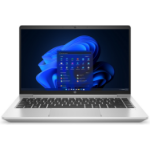 HP ProBook 440 G9 Intel® Core™ i5 i5-1235U Laptop 35.6 cm (14") Full HD 8 GB DDR4-SDRAM 256 GB SSD Wi-Fi 6E (802.11ax) Windows 11 ProSpecial Price £569.08 £682.90 Regular Price £741.60
HP ProBook 440 G9 Intel® Core™ i5 i5-1235U Laptop 35.6 cm (14") Full HD 8 GB DDR4-SDRAM 256 GB SSD Wi-Fi 6E (802.11ax) Windows 11 ProSpecial Price £569.08 £682.90 Regular Price £741.60 -
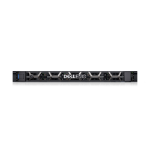 DELL PowerEdge R550 server 480 GB Rack (2U) Intel Xeon Silver 4310 2.1 GHz 16 GB DDR4-SDRAM 800 WSpecial Price £2,390.43 £2,868.52 Regular Price £3,073.40
DELL PowerEdge R550 server 480 GB Rack (2U) Intel Xeon Silver 4310 2.1 GHz 16 GB DDR4-SDRAM 800 WSpecial Price £2,390.43 £2,868.52 Regular Price £3,073.40
Monitors: High-quality monitors significantly impact user experience and productivity. Choose monitors with suitable screen size, resolution, and ergonomic features to minimise eye strain.
-
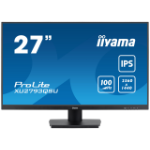 iiyama ProLite XU2793QSU-B6 computer monitor 68.6 cm (27") 2560 x 1440 pixels Wide Quad HD LED BlackSpecial Price £160.23 £192.28 Regular Price £195.54
iiyama ProLite XU2793QSU-B6 computer monitor 68.6 cm (27") 2560 x 1440 pixels Wide Quad HD LED BlackSpecial Price £160.23 £192.28 Regular Price £195.54 -
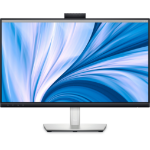 DELL C Series 24 Inch Video Conferencing Monitor - C2423HSpecial Price £190.15 £228.18 Regular Price £232.04
DELL C Series 24 Inch Video Conferencing Monitor - C2423HSpecial Price £190.15 £228.18 Regular Price £232.04 -
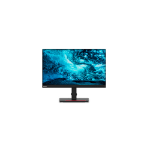 Lenovo ThinkVision T23i-20 LED display 58.4 cm (23") 1920 x 1080 pixels Full HD BlackSpecial Price £95.58 £114.70 Regular Price £116.64
Lenovo ThinkVision T23i-20 LED display 58.4 cm (23") 1920 x 1080 pixels Full HD BlackSpecial Price £95.58 £114.70 Regular Price £116.64 -
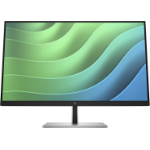 HP E27 G5 FHD MonitorSpecial Price £162.76 £195.31 Regular Price £198.62
HP E27 G5 FHD MonitorSpecial Price £162.76 £195.31 Regular Price £198.62 -
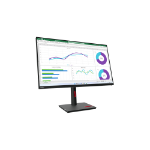 Lenovo ThinkVision T32h-30 LED display 80 cm (31.5") 2560 x 1440 pixels Quad HD BlackSpecial Price £405.25 £486.30 Regular Price £494.54
Lenovo ThinkVision T32h-30 LED display 80 cm (31.5") 2560 x 1440 pixels Quad HD BlackSpecial Price £405.25 £486.30 Regular Price £494.54 -
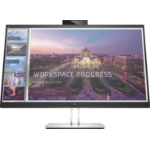 HP E24d G4 FHD USB-C Docking MonitorSpecial Price £135.88 £163.06 Regular Price £165.82
HP E24d G4 FHD USB-C Docking MonitorSpecial Price £135.88 £163.06 Regular Price £165.82 -
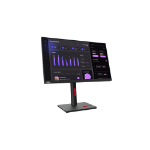 Lenovo ThinkVision T24i-30 LED display 60.5 cm (23.8") 1920 x 1080 pixels Full HD BlackSpecial Price £137.07 £164.48 Regular Price £167.27
Lenovo ThinkVision T24i-30 LED display 60.5 cm (23.8") 1920 x 1080 pixels Full HD BlackSpecial Price £137.07 £164.48 Regular Price £167.27 -
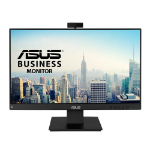 ASUS BE24EQK computer monitor 60.5 cm (23.8") 1920 x 1080 pixels Full HD LED BlackSpecial Price £161.34 £193.61 Regular Price £196.90
ASUS BE24EQK computer monitor 60.5 cm (23.8") 1920 x 1080 pixels Full HD LED BlackSpecial Price £161.34 £193.61 Regular Price £196.90 -
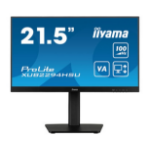 iiyama ProLite XUB2294HSU-B6 computer monitor 54.6 cm (21.5") 1920 x 1080 pixels Full HD LCD BlackSpecial Price £91.37 £109.64 Regular Price £111.50
iiyama ProLite XUB2294HSU-B6 computer monitor 54.6 cm (21.5") 1920 x 1080 pixels Full HD LCD BlackSpecial Price £91.37 £109.64 Regular Price £111.50 -
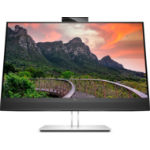 HP E-Series E27m G4 computer monitor 68.6 cm (27") 2560 x 1440 pixels Quad HD BlackSpecial Price £333.74 £400.49 Regular Price £407.28
HP E-Series E27m G4 computer monitor 68.6 cm (27") 2560 x 1440 pixels Quad HD BlackSpecial Price £333.74 £400.49 Regular Price £407.28
Printers and Multifunction Devices (MFDs): Reliable printing capabilities are still crucial in many businesses. Depending on your needs, a basic printer or a multifunctional device offering printing, copying, scanning, and faxing may be ideal.
-
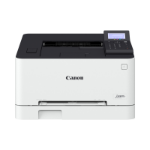 Canon i-SENSYS LBP631Cw Colour 1200 x 1200 DPI A4 Wi-FiSpecial Price £158.04 £189.65 Regular Price £192.86
Canon i-SENSYS LBP631Cw Colour 1200 x 1200 DPI A4 Wi-FiSpecial Price £158.04 £189.65 Regular Price £192.86 -
 HP LaserJet MFP M234dw Printer, Black and white, Printer for Small office, Print, copy, scan, Scan to email; Scan to PDFSpecial Price £162.70 £195.24 Regular Price £198.55Out of stock
HP LaserJet MFP M234dw Printer, Black and white, Printer for Small office, Print, copy, scan, Scan to email; Scan to PDFSpecial Price £162.70 £195.24 Regular Price £198.55Out of stock -
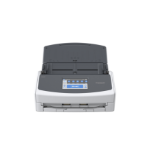 Ricoh ScanSnap iX1600 ADF + Manual feed scanner 600 x 600 DPI A4 WhiteSpecial Price £343.71 £412.45 Regular Price £419.45
Ricoh ScanSnap iX1600 ADF + Manual feed scanner 600 x 600 DPI A4 WhiteSpecial Price £343.71 £412.45 Regular Price £419.45 -
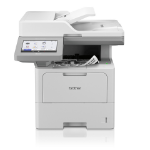 Brother MFC-L6910DN Laser A4 1200 x 1200 DPI 50 ppm Wi-FiSpecial Price £720.57 £864.68 Regular Price £879.34
Brother MFC-L6910DN Laser A4 1200 x 1200 DPI 50 ppm Wi-FiSpecial Price £720.57 £864.68 Regular Price £879.34 -
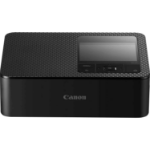 Canon SELPHY CP1500 photo printer Dye-sublimation 300 x 300 DPI 4" x 6" (10x15 cm) Wi-FiSpecial Price £121.49 £145.79 Regular Price £148.26Out of stock
Canon SELPHY CP1500 photo printer Dye-sublimation 300 x 300 DPI 4" x 6" (10x15 cm) Wi-FiSpecial Price £121.49 £145.79 Regular Price £148.26Out of stock -
 Epson TM-M30II 203 x 203 DPI Wired Direct thermal POS printerSpecial Price £220.58 £264.70 Regular Price £269.18Out of stock
Epson TM-M30II 203 x 203 DPI Wired Direct thermal POS printerSpecial Price £220.58 £264.70 Regular Price £269.18Out of stock -
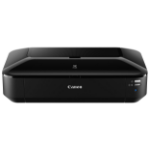 Canon PIXMA iX6850 photo printer Inkjet 9600 x 2400 DPI A3+ (330 x 483 mm) Wi-FiSpecial Price £161.75 £194.10 Regular Price £197.40Out of stock
Canon PIXMA iX6850 photo printer Inkjet 9600 x 2400 DPI A3+ (330 x 483 mm) Wi-FiSpecial Price £161.75 £194.10 Regular Price £197.40Out of stock -
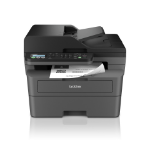 Brother MFC-L2800DW wireless all-in-one mono laser printerSpecial Price £183.74 £220.49 Regular Price £224.22
Brother MFC-L2800DW wireless all-in-one mono laser printerSpecial Price £183.74 £220.49 Regular Price £224.22 -
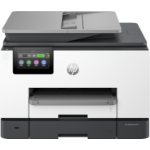 HP OfficeJet Pro HP 9132e All-in-One Printer, Color, Printer for Small medium business, Print, copy, scan, fax, Wireless; HP+; HP Instant Ink eligible; Two-sided printing; Two-sided scanning; Automatic document feeder; Fax; Touchscreen; Smart Advance ScanSpecial Price £216.11 £259.33 Regular Price £263.72Out of stock
HP OfficeJet Pro HP 9132e All-in-One Printer, Color, Printer for Small medium business, Print, copy, scan, fax, Wireless; HP+; HP Instant Ink eligible; Two-sided printing; Two-sided scanning; Automatic document feeder; Fax; Touchscreen; Smart Advance ScanSpecial Price £216.11 £259.33 Regular Price £263.72Out of stock
Networking Equipment: A robust network infrastructure is essential for seamless communication and data sharing. Invest in a reliable router, switches, and cables to ensure a secure and efficient network connection.
-
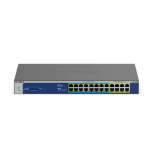 NETGEAR GS524UP Unmanaged Gigabit Ethernet (10/100/1000) Power over Ethernet (PoE) GreySpecial Price £412.76 £495.31 Regular Price £503.71
NETGEAR GS524UP Unmanaged Gigabit Ethernet (10/100/1000) Power over Ethernet (PoE) GreySpecial Price £412.76 £495.31 Regular Price £503.71 -
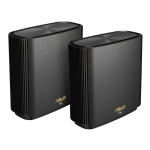 ASUS ZenWiFi AX (XT9) AX7800 2er Set Schwarz Tri-band (2.4 GHz / 5 GHz / 5 GHz) Wi-Fi 6 (802.11ax) Black 4 InternalSpecial Price £416.08 £499.30 Regular Price £507.76Out of stock
ASUS ZenWiFi AX (XT9) AX7800 2er Set Schwarz Tri-band (2.4 GHz / 5 GHz / 5 GHz) Wi-Fi 6 (802.11ax) Black 4 InternalSpecial Price £416.08 £499.30 Regular Price £507.76Out of stock -
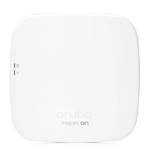 Aruba Instant On AP12 1300 Mbit/s White Power over Ethernet (PoE)Special Price £83.44 £100.13 Regular Price £101.82
Aruba Instant On AP12 1300 Mbit/s White Power over Ethernet (PoE)Special Price £83.44 £100.13 Regular Price £101.82 -
 D-Link DGS-1510-52X network switch Managed L3 Gigabit Ethernet (10/100/1000) 1U BlackSpecial Price £587.63 £705.16 Regular Price £717.11
D-Link DGS-1510-52X network switch Managed L3 Gigabit Ethernet (10/100/1000) 1U BlackSpecial Price £587.63 £705.16 Regular Price £717.11 -
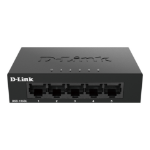 D-Link DGS-105GL Unmanaged Gigabit Ethernet (10/100/1000) BlackSpecial Price £12.79 £15.35 Regular Price £15.61Out of stock
D-Link DGS-105GL Unmanaged Gigabit Ethernet (10/100/1000) BlackSpecial Price £12.79 £15.35 Regular Price £15.61Out of stock -
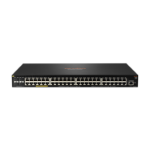 Aruba 2930F 48G PoE+ 4SFP+ 740W Managed L3 Gigabit Ethernet (10/100/1000) Power over Ethernet (PoE) 1U BlackSpecial Price £2,248.79 £2,698.55 Regular Price £2,744.28
Aruba 2930F 48G PoE+ 4SFP+ 740W Managed L3 Gigabit Ethernet (10/100/1000) Power over Ethernet (PoE) 1U BlackSpecial Price £2,248.79 £2,698.55 Regular Price £2,744.28 -
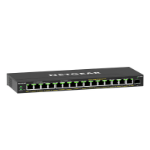 NETGEAR GS316EPP Managed Gigabit Ethernet (10/100/1000) Power over Ethernet (PoE) BlackSpecial Price £205.05 £246.06 Regular Price £250.22
NETGEAR GS316EPP Managed Gigabit Ethernet (10/100/1000) Power over Ethernet (PoE) BlackSpecial Price £205.05 £246.06 Regular Price £250.22 -
 D-Link DGS-1024D/B 24-Port Gigabit Unmanaged Desktop SwitchSpecial Price £84.78 £101.74 Regular Price £103.46
D-Link DGS-1024D/B 24-Port Gigabit Unmanaged Desktop SwitchSpecial Price £84.78 £101.74 Regular Price £103.46 -
 ASUS ROG STRIX GS-AX5400 wireless router Gigabit Ethernet Dual-band (2.4 GHz / 5 GHz) BlackSpecial Price £211.39 £253.67 Regular Price £257.96
ASUS ROG STRIX GS-AX5400 wireless router Gigabit Ethernet Dual-band (2.4 GHz / 5 GHz) BlackSpecial Price £211.39 £253.67 Regular Price £257.96
Office Furniture: Ergonomic chairs, desks with adjustable heights, and well-designed workstations promote employee comfort and well-being, ultimately contributing to better work performance.
-
 Dynamic EX000185 office/computer chair Padded seat Padded backrestSpecial Price £271.60 £325.92 Regular Price £331.44
Dynamic EX000185 office/computer chair Padded seat Padded backrestSpecial Price £271.60 £325.92 Regular Price £331.44 -
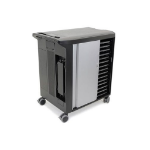 DELL CT30N181 Black, Grey Laptop Multimedia cartSpecial Price £1,893.84 £2,272.61 Regular Price £2,311.13Out of stock
DELL CT30N181 Black, Grey Laptop Multimedia cartSpecial Price £1,893.84 £2,272.61 Regular Price £2,311.13Out of stock -
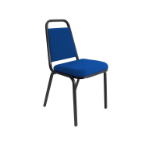 Dynamic BR000197 waiting chair Padded seat Padded backrestSpecial Price £47.68 £57.22 Regular Price £58.19
Dynamic BR000197 waiting chair Padded seat Padded backrestSpecial Price £47.68 £57.22 Regular Price £58.19 -
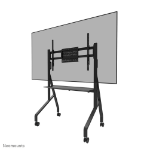 Neomounts floor standSpecial Price £192.75 £231.30 Regular Price £235.22
Neomounts floor standSpecial Price £192.75 £231.30 Regular Price £235.22 -
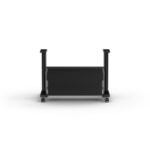 Canon 3085C004 printer cabinet/stand BlackSpecial Price £146.39 £175.67 Regular Price £178.64
Canon 3085C004 printer cabinet/stand BlackSpecial Price £146.39 £175.67 Regular Price £178.64 -
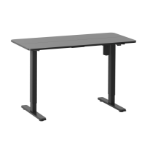 Equip 650812 computer desk BlackSpecial Price £282.39 £338.87 Regular Price £344.60
Equip 650812 computer desk BlackSpecial Price £282.39 £338.87 Regular Price £344.60 -
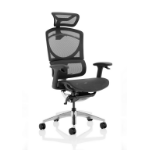 Dynamic PO000063 office/computer chair Mesh seat Mesh backrestSpecial Price £547.78 £657.34 Regular Price £668.47
Dynamic PO000063 office/computer chair Mesh seat Mesh backrestSpecial Price £547.78 £657.34 Regular Price £668.47 -
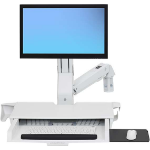 Ergotron StyleView White PC Multimedia standSpecial Price £631.74 £758.09 Regular Price £770.93Out of stock
Ergotron StyleView White PC Multimedia standSpecial Price £631.74 £758.09 Regular Price £770.93Out of stock -
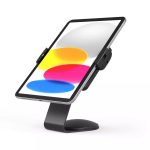 Compulocks Universal Tablet Cling Core Counter Stand or Wall Mount BlackSpecial Price £99.20 £119.04 Regular Price £121.06
Compulocks Universal Tablet Cling Core Counter Stand or Wall Mount BlackSpecial Price £99.20 £119.04 Regular Price £121.06 -
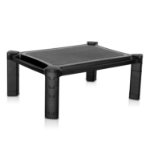
Optimising Efficiency: Hardware for Enhanced Operations
Video Conferencing Equipment: Webcams, microphones, and video conferencing software facilitate remote communication and collaboration, allowing teams to connect seamlessly regardless of location.
Video Conferencing Equipment: Webcams, microphones, and video conferencing software facilitate remote communication and collaboration, allowing teams to connect seamlessly regardless of location.
-
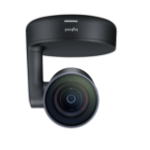 Logitech Rally Ultra-HD ConferenceCamSpecial Price £1,871.13 £2,245.36 Regular Price £2,283.41
Logitech Rally Ultra-HD ConferenceCamSpecial Price £1,871.13 £2,245.36 Regular Price £2,283.41 -
 Lenovo Go Wired ANC Headset Head-band Car/Home office USB Type-C BlackSpecial Price £33.04 £39.65 Regular Price £40.32
Lenovo Go Wired ANC Headset Head-band Car/Home office USB Type-C BlackSpecial Price £33.04 £39.65 Regular Price £40.32 -
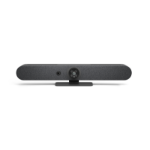 Logitech Rally Bar MiniSpecial Price £2,196.69 £2,636.03 Regular Price £2,680.70
Logitech Rally Bar MiniSpecial Price £2,196.69 £2,636.03 Regular Price £2,680.70 -
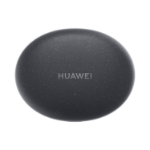 Huawei FreeBuds 5i Headset True Wireless Stereo (TWS) In-ear Calls/Music Bluetooth BlackSpecial Price £79.73 £95.68 Regular Price £97.30
Huawei FreeBuds 5i Headset True Wireless Stereo (TWS) In-ear Calls/Music Bluetooth BlackSpecial Price £79.73 £95.68 Regular Price £97.30 -
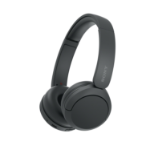 Sony WH-CH520 Headset Wireless Head-band Calls/Music USB Type-C Bluetooth BlackSpecial Price £38.48 £46.18 Regular Price £46.96
Sony WH-CH520 Headset Wireless Head-band Calls/Music USB Type-C Bluetooth BlackSpecial Price £38.48 £46.18 Regular Price £46.96 -
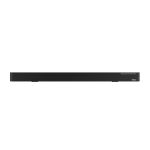 Lenovo ThinkSmart Bar Black 5.0Special Price £307.81 £369.37 Regular Price £375.64
Lenovo ThinkSmart Bar Black 5.0Special Price £307.81 £369.37 Regular Price £375.64 -
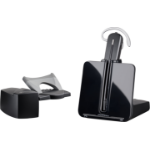 POLY CS540A Convertible Headset +AP11 KitSpecial Price £158.17 £189.80 Regular Price £193.02
POLY CS540A Convertible Headset +AP11 KitSpecial Price £158.17 £189.80 Regular Price £193.02 -
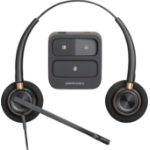 POLY EncorePro 520 Binaural Headset +Quick DisconnectSpecial Price £65.32 £78.38 Regular Price £79.72
POLY EncorePro 520 Binaural Headset +Quick DisconnectSpecial Price £65.32 £78.38 Regular Price £79.72
Presentation Tools: Projectors, screens, or interactive whiteboards enhance presentations and improve the effectiveness of team meetings.
-
 Epson LightScene EV-115 data projector Standard throw projector 2200 ANSI lumens 3LCD WXGA (1280x800) BlackSpecial Price £1,525.70 £1,830.84 Regular Price £1,952.90
Epson LightScene EV-115 data projector Standard throw projector 2200 ANSI lumens 3LCD WXGA (1280x800) BlackSpecial Price £1,525.70 £1,830.84 Regular Price £1,952.90 -
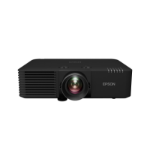 Epson EB-L775U data projector 7000 ANSI lumens 3LCD WUXGA (1920x1200) BlackSpecial Price £3,499.23 £4,199.08 Regular Price £4,479.02
Epson EB-L775U data projector 7000 ANSI lumens 3LCD WUXGA (1920x1200) BlackSpecial Price £3,499.23 £4,199.08 Regular Price £4,479.02 -
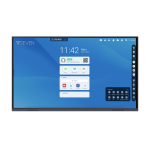 V7 IFP7501- interactive whiteboard 190.5 cm (75") 3840 x 2160 pixels Touchscreen BlackSpecial Price £1,171.20 £1,405.44 Regular Price £1,499.14
V7 IFP7501- interactive whiteboard 190.5 cm (75") 3840 x 2160 pixels Touchscreen BlackSpecial Price £1,171.20 £1,405.44 Regular Price £1,499.14 -
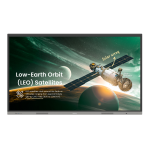 BenQ RE7503A interactive whiteboard 190.5 cm (75") 3840 x 2160 pixels Touchscreen BlackSpecial Price £2,205.20 £2,646.24 Regular Price £2,822.66
BenQ RE7503A interactive whiteboard 190.5 cm (75") 3840 x 2160 pixels Touchscreen BlackSpecial Price £2,205.20 £2,646.24 Regular Price £2,822.66 -
 ASUS ZenBeam L2 data projector Short throw projector 400 ANSI lumens DLP 1080p (1920x1080) NavySpecial Price £570.72 £684.86 Regular Price £730.52
ASUS ZenBeam L2 data projector Short throw projector 400 ANSI lumens DLP 1080p (1920x1080) NavySpecial Price £570.72 £684.86 Regular Price £730.52 -
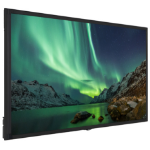 Vestel IFD55TH652/3 interactive whiteboard 139.7 cm (55") 3840 x 2160 pixels Touchscreen Black USBSpecial Price £872.76 £1,047.31 Regular Price £1,117.14
Vestel IFD55TH652/3 interactive whiteboard 139.7 cm (55") 3840 x 2160 pixels Touchscreen Black USBSpecial Price £872.76 £1,047.31 Regular Price £1,117.14 -
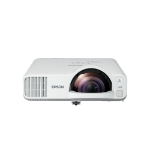 Epson EB-L210SF data projector Short throw projector 4000 ANSI lumens 3LCD 3D WhiteSpecial Price £1,207.79 £1,449.35 Regular Price £1,545.97Out of stock
Epson EB-L210SF data projector Short throw projector 4000 ANSI lumens 3LCD 3D WhiteSpecial Price £1,207.79 £1,449.35 Regular Price £1,545.97Out of stock -
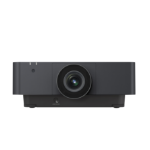 Sony VPL-FHZ80/B data projector Projector module 6000 ANSI lumens 3LCD 1080p (1920x1080) BlackSpecial Price £3,549.49 £4,259.39 Regular Price £4,543.34
Sony VPL-FHZ80/B data projector Projector module 6000 ANSI lumens 3LCD 1080p (1920x1080) BlackSpecial Price £3,549.49 £4,259.39 Regular Price £4,543.34 -
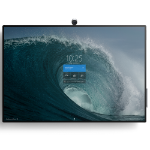 Microsoft Surface Hub 2S interactive whiteboard 127 cm (50") 3840 x 2560 pixels PlatinumSpecial Price £7,521.27 £9,025.52 Regular Price £9,627.22
Microsoft Surface Hub 2S interactive whiteboard 127 cm (50") 3840 x 2560 pixels PlatinumSpecial Price £7,521.27 £9,025.52 Regular Price £9,627.22
Data Storage Solutions: External hard drives, network-attached storage (NAS) devices, or cloud storage solutions ensure data security and facilitate secure backups.
-
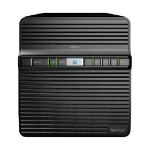 Synology DiskStation DS423 NAS Desktop Ethernet LAN Black RTD1619BSpecial Price £900.72 £1,080.86 Regular Price £1,163.26Out of stock
Synology DiskStation DS423 NAS Desktop Ethernet LAN Black RTD1619BSpecial Price £900.72 £1,080.86 Regular Price £1,163.26Out of stock -
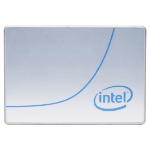 Intel D7 SSDPF2KE032T1N1Special Price £497.89 £597.47 Regular Price £644.46
Intel D7 SSDPF2KE032T1N1Special Price £497.89 £597.47 Regular Price £644.46 -
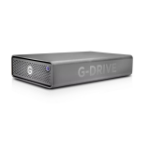 SanDisk G-DRIVE PRO STUDIO 7680 GB GreySpecial Price £1,477.60 £1,773.12 Regular Price £1,912.58
SanDisk G-DRIVE PRO STUDIO 7680 GB GreySpecial Price £1,477.60 £1,773.12 Regular Price £1,912.58 -
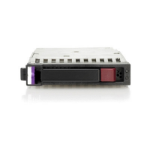 HPE MSA 900GB 6G SAS 10K SFF(2.5-inch) Dual Port Ent 3yr Warranty Hard Drive 2.5"Special Price £44.10 £52.92 Regular Price £57.08
HPE MSA 900GB 6G SAS 10K SFF(2.5-inch) Dual Port Ent 3yr Warranty Hard Drive 2.5"Special Price £44.10 £52.92 Regular Price £57.08 -
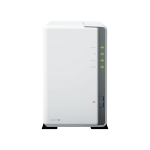 Synology DiskStation DS223J NAS Desktop Ethernet LAN White RTD1619BSpecial Price £518.08 £621.70 Regular Price £669.10Out of stock
Synology DiskStation DS223J NAS Desktop Ethernet LAN White RTD1619BSpecial Price £518.08 £621.70 Regular Price £669.10Out of stock -
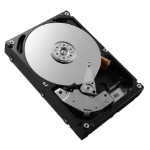 DELL XY986-REF internal hard drive 2.5" 2 TB SASSpecial Price £73.52 £88.22 Regular Price £95.17
DELL XY986-REF internal hard drive 2.5" 2 TB SASSpecial Price £73.52 £88.22 Regular Price £95.17 -
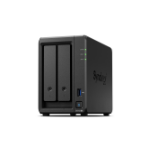 Synology DiskStation DS723+ NAS/storage server Tower Ethernet LAN Black R1600Special Price £385.59 £462.71 Regular Price £497.98
Synology DiskStation DS723+ NAS/storage server Tower Ethernet LAN Black R1600Special Price £385.59 £462.71 Regular Price £497.98 -
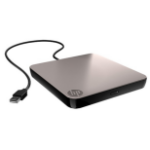 HPE 701498-B21 optical disc drive DVD±RW BlackSpecial Price £86.41 £103.69 Regular Price £111.84
HPE 701498-B21 optical disc drive DVD±RW BlackSpecial Price £86.41 £103.69 Regular Price £111.84 -
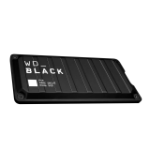 Western Digital Ultrastar P40 1 TB BlackSpecial Price £134.02 £160.82 Regular Price £173.47
Western Digital Ultrastar P40 1 TB BlackSpecial Price £134.02 £160.82 Regular Price £173.47
Security Hardware: Consider hardware firewalls, intrusion detection systems, and access control systems to safeguard your valuable business data and IT infrastructure.
-
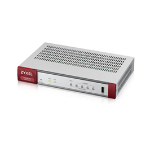 Zyxel USG FLEX 50 hardware firewall 0.35 Gbit/sSpecial Price £219.52 £263.42 Regular Price £267.89
Zyxel USG FLEX 50 hardware firewall 0.35 Gbit/sSpecial Price £219.52 £263.42 Regular Price £267.89 -
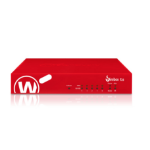 WatchGuard Firebox T25 hardware firewall 3.14 Gbit/sSpecial Price £271.40 £325.68 Regular Price £331.20
WatchGuard Firebox T25 hardware firewall 3.14 Gbit/sSpecial Price £271.40 £325.68 Regular Price £331.20 -
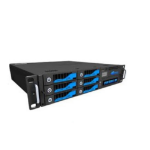 Barracuda Networks BSF800a hardware firewall 2U£34,700.00 £41,640.00
Barracuda Networks BSF800a hardware firewall 2U£34,700.00 £41,640.00 -
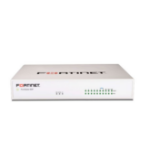 Fortinet 10 x GE RJ45 ports (including 7 x Internal Ports, 2 x WAN Ports, 1 x DMZ Port).Special Price £533.47 £640.16 Regular Price £651.01
Fortinet 10 x GE RJ45 ports (including 7 x Internal Ports, 2 x WAN Ports, 1 x DMZ Port).Special Price £533.47 £640.16 Regular Price £651.01 -
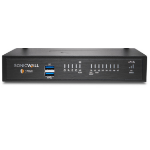 SonicWall TZ370 hardware firewall 3 Gbit/sSpecial Price £1,344.65 £1,613.58 Regular Price £1,640.93
SonicWall TZ370 hardware firewall 3 Gbit/sSpecial Price £1,344.65 £1,613.58 Regular Price £1,640.93 -
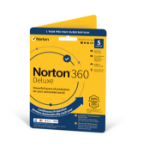 NortonLifeLock Norton 360 Deluxe | 5 Devices | 1 Year Subscription with Automatic Renewal | Includes Secure VPN and Password Manager | PCs, Mac, Smartphones and TabletsSpecial Price £38.16 £45.79 Regular Price £46.57
NortonLifeLock Norton 360 Deluxe | 5 Devices | 1 Year Subscription with Automatic Renewal | Includes Secure VPN and Password Manager | PCs, Mac, Smartphones and TabletsSpecial Price £38.16 £45.79 Regular Price £46.57 -
 WatchGuard Panda Fusion 360 Security management Full Multilingual 1 - 50 license(s) 1 year(s)Special Price £66.54 £79.85 Regular Price £81.20
WatchGuard Panda Fusion 360 Security management Full Multilingual 1 - 50 license(s) 1 year(s)Special Price £66.54 £79.85 Regular Price £81.20 -
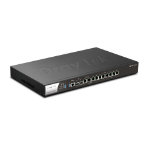 Draytek Vigor 3912 VPN Enterprise RouterSpecial Price £765.82 £918.98 Regular Price £934.56
Draytek Vigor 3912 VPN Enterprise RouterSpecial Price £765.82 £918.98 Regular Price £934.56 -
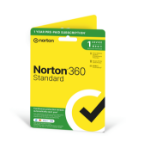 NortonLifeLock NORTON 360 STANDARD 1 DEVICE 12MOSpecial Price £8.79 £10.55 Regular Price £10.73
NortonLifeLock NORTON 360 STANDARD 1 DEVICE 12MOSpecial Price £8.79 £10.55 Regular Price £10.73 -
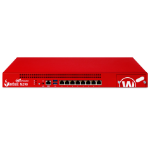 WatchGuard Firebox M290 hardware firewall 1.18 Gbit/sSpecial Price £978.82 £1,174.58 Regular Price £1,194.49
WatchGuard Firebox M290 hardware firewall 1.18 Gbit/sSpecial Price £978.82 £1,174.58 Regular Price £1,194.49 -
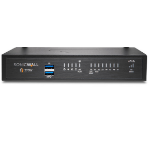 SonicWall TZ270 hardware firewall 2 Gbit/sSpecial Price £325.04 £390.05 Regular Price £396.66
SonicWall TZ270 hardware firewall 2 Gbit/sSpecial Price £325.04 £390.05 Regular Price £396.66
Prioritising User Needs and Growth:
Mobile Device Integration: With the rise of remote working, ensure your hardware setup allows for seamless integration with business applications on mobile devices such as tablets and smartphones.
Mobile Device Integration: With the rise of remote working, ensure your hardware setup allows for seamless integration with business applications on mobile devices such as tablets and smartphones.
-
 Google Pixel 8 15.8 cm (6.2") Dual SIM 5G USB Type-C 8 GB 128 GB 4575 mAh BlackSpecial Price £554.60 £665.52 Regular Price £676.80
Google Pixel 8 15.8 cm (6.2") Dual SIM 5G USB Type-C 8 GB 128 GB 4575 mAh BlackSpecial Price £554.60 £665.52 Regular Price £676.80 -
 Apple iPhone 12 64GB - GreenSpecial Price £425.03 £510.04 Regular Price £518.69
Apple iPhone 12 64GB - GreenSpecial Price £425.03 £510.04 Regular Price £518.69 -
 Sony Xperia XQDQ54C0G.EUK smartphone 16.5 cm (6.5") Dual SIM Android 13 5G USB Type-C 12 GB 256 GB 5000 mAh Black, BrownSpecial Price £1,106.67 £1,328.00 Regular Price £1,350.52
Sony Xperia XQDQ54C0G.EUK smartphone 16.5 cm (6.5") Dual SIM Android 13 5G USB Type-C 12 GB 256 GB 5000 mAh Black, BrownSpecial Price £1,106.67 £1,328.00 Regular Price £1,350.52 -
 Apple iPhone 15 512GB - BlueSpecial Price £944.23 £1,133.08 Regular Price £1,152.29
Apple iPhone 15 512GB - BlueSpecial Price £944.23 £1,133.08 Regular Price £1,152.29 -
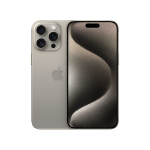 Apple iPhone 15 Pro Max 256GB - Natural TitaniumSpecial Price £1,038.64 £1,246.37 Regular Price £1,267.49Out of stock
Apple iPhone 15 Pro Max 256GB - Natural TitaniumSpecial Price £1,038.64 £1,246.37 Regular Price £1,267.49Out of stock -
 Google Pixel 8 15.8 cm (6.2") Dual SIM 5G USB Type-C 8 GB 128 GB 4575 mAh RoseSpecial Price £569.94 £683.93 Regular Price £695.52
Google Pixel 8 15.8 cm (6.2") Dual SIM 5G USB Type-C 8 GB 128 GB 4575 mAh RoseSpecial Price £569.94 £683.93 Regular Price £695.52 -
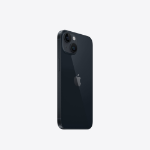 Apple iPhone 14 128GB - MidnightSpecial Price £566.64 £679.97 Regular Price £691.49
Apple iPhone 14 128GB - MidnightSpecial Price £566.64 £679.97 Regular Price £691.49 -
 Google Pixel 7a 15.5 cm (6.1") Dual SIM Android 13 5G USB Type-C 8 GB 128 GB 4385 mAh BlueSpecial Price £330.40 £396.48 Regular Price £403.20
Google Pixel 7a 15.5 cm (6.1") Dual SIM Android 13 5G USB Type-C 8 GB 128 GB 4385 mAh BlueSpecial Price £330.40 £396.48 Regular Price £403.20 -
 Honor 8S 14.5 cm (5.71") Single SIM Android 9.0 4G 2 GB 32 GB BlueSpecial Price £48.62 £58.34 Regular Price £59.33
Honor 8S 14.5 cm (5.71") Single SIM Android 9.0 4G 2 GB 32 GB BlueSpecial Price £48.62 £58.34 Regular Price £59.33 -
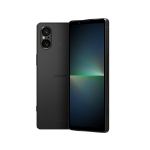 Sony Xperia 5 V 15.5 cm (6.1") Dual SIM Android 13 5G USB Type-C 8 GB 128 GB 5000 mAh BlackSpecial Price £735.01 £882.01 Regular Price £896.96
Sony Xperia 5 V 15.5 cm (6.1") Dual SIM Android 13 5G USB Type-C 8 GB 128 GB 5000 mAh BlackSpecial Price £735.01 £882.01 Regular Price £896.96
Scalability: Choose hardware with upgradeability in mind, allowing you to add additional workstations, storage capacity, or network resources as your business grows.
-
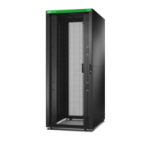 APC ER8222 rack cabinet 42U Freestanding rack BlackSpecial Price £1,615.04 £1,938.05 Regular Price £1,970.90Out of stock
APC ER8222 rack cabinet 42U Freestanding rack BlackSpecial Price £1,615.04 £1,938.05 Regular Price £1,970.90Out of stock -
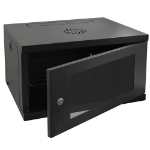 Videk 9u 600w x 600d Wall Mounting Cabinet c/w Glass Door - BlackSpecial Price £162.78 £195.34 Regular Price £198.65
Videk 9u 600w x 600d Wall Mounting Cabinet c/w Glass Door - BlackSpecial Price £162.78 £195.34 Regular Price £198.65 -
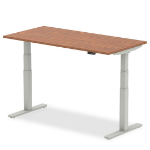
-
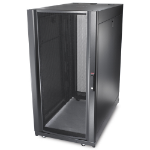 APC NetShelter SX 24U Freestanding rack BlackSpecial Price £1,420.21 £1,704.25 Regular Price £1,733.14
APC NetShelter SX 24U Freestanding rack BlackSpecial Price £1,420.21 £1,704.25 Regular Price £1,733.14 -
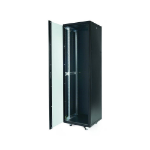 Videk 12u 600w x 800d Floor Standing Cabinet c/w Inset Glass Door Assembled - BlackSpecial Price £397.19 £476.63 Regular Price £484.70
Videk 12u 600w x 800d Floor Standing Cabinet c/w Inset Glass Door Assembled - BlackSpecial Price £397.19 £476.63 Regular Price £484.70 -
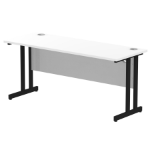 Dynamic MI003331 deskSpecial Price £208.23 £249.88 Regular Price £254.11
Dynamic MI003331 deskSpecial Price £208.23 £249.88 Regular Price £254.11 -
 Equip 650812 computer desk BlackSpecial Price £282.39 £338.87 Regular Price £344.60
Equip 650812 computer desk BlackSpecial Price £282.39 £338.87 Regular Price £344.60 -
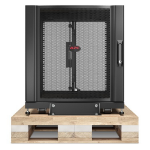 APC NetShelter SX 12U Freestanding rack BlackSpecial Price £1,103.97 £1,324.76 Regular Price £1,347.22
APC NetShelter SX 12U Freestanding rack BlackSpecial Price £1,103.97 £1,324.76 Regular Price £1,347.22 -
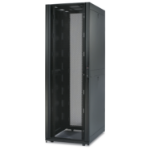 APC AR3150 rack cabinet 42U Freestanding rack BlackSpecial Price £1,750.48 £2,100.58 Regular Price £2,136.18
APC AR3150 rack cabinet 42U Freestanding rack BlackSpecial Price £1,750.48 £2,100.58 Regular Price £2,136.18 -
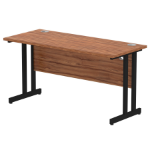 Dynamic MI003262 deskSpecial Price £200.41 £240.49 Regular Price £244.57
Dynamic MI003262 deskSpecial Price £200.41 £240.49 Regular Price £244.57
User Input: Consider employee needs when making hardware decisions. Adjustable workstations, ergonomic keyboards, and comfortable chairs contribute to a more positive work environment.
-
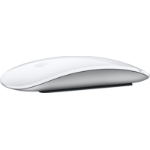 Apple Magic mouse Ambidextrous RF Wireless + BluetoothSpecial Price £65.10 £78.12 Regular Price £79.44
Apple Magic mouse Ambidextrous RF Wireless + BluetoothSpecial Price £65.10 £78.12 Regular Price £79.44 -
 DELL DJ491 keyboard USB QWERTY English BlackSpecial Price £26.05 £31.26 Regular Price £31.80
DELL DJ491 keyboard USB QWERTY English BlackSpecial Price £26.05 £31.26 Regular Price £31.80 -
 DELL MS3320W mouse Ambidextrous RF Wireless + Bluetooth Optical 1600 DPISpecial Price £14.61 £17.53 Regular Price £17.83
DELL MS3320W mouse Ambidextrous RF Wireless + Bluetooth Optical 1600 DPISpecial Price £14.61 £17.53 Regular Price £17.83 -
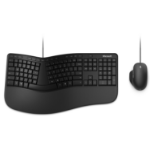 Microsoft Ergonomic Desktop keyboard Mouse included USB BlackSpecial Price £51.92 £62.30 Regular Price £63.36
Microsoft Ergonomic Desktop keyboard Mouse included USB BlackSpecial Price £51.92 £62.30 Regular Price £63.36 -
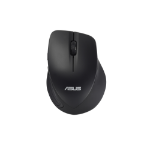 ASUS WT465 mouse Right-hand RF Wireless Optical 1600 DPISpecial Price £11.42 £13.70 Regular Price £13.94
ASUS WT465 mouse Right-hand RF Wireless Optical 1600 DPISpecial Price £11.42 £13.70 Regular Price £13.94 -
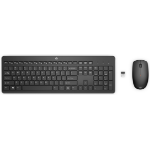 HP 230 Wireless Mouse and Keyboard ComboSpecial Price £28.25 £33.90 Regular Price £34.48
HP 230 Wireless Mouse and Keyboard ComboSpecial Price £28.25 £33.90 Regular Price £34.48 -
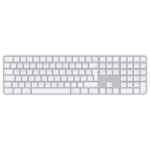 Apple Magic keyboard USB + Bluetooth Portuguese Aluminium, WhiteSpecial Price £147.50 £177.00 Regular Price £180.00Out of stock
Apple Magic keyboard USB + Bluetooth Portuguese Aluminium, WhiteSpecial Price £147.50 £177.00 Regular Price £180.00Out of stock -
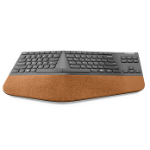 Lenovo Go Wireless Split keyboard RF Wireless German GreySpecial Price £36.58 £43.90 Regular Price £44.64
Lenovo Go Wireless Split keyboard RF Wireless German GreySpecial Price £36.58 £43.90 Regular Price £44.64 -
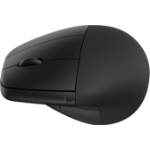 HP 925 Ergonomic Vertical MouseSpecial Price £64.89 £77.87 Regular Price £79.19
HP 925 Ergonomic Vertical MouseSpecial Price £64.89 £77.87 Regular Price £79.19 -
 DELL KB212-B keyboard USB English BlackSpecial Price £18.54 £22.25 Regular Price £22.62
DELL KB212-B keyboard USB English BlackSpecial Price £18.54 £22.25 Regular Price £22.62
Equipping your office with the right hardware is an investment in your business's success. By prioritising essential elements, optimising for efficiency, and considering future needs, you can create a well-equipped and functional workspace that empowers your employees to work productively and collaboratively. Remember, the ideal hardware setup aligns with your specific business operations and can be tailored to maximise efficiency and support your long-term growth objectives.
Ready to outfit your office for success? Explore the diverse range of business-grade hardware solutions available and consult with IT professionals to ensure your chosen equipment perfectly complements your company's needs!
Ready to outfit your office for success? Explore the diverse range of business-grade hardware solutions available and consult with IT professionals to ensure your chosen equipment perfectly complements your company's needs!
Share on Facebook
Share on Twitter
Share on Pinterest
Search Posts
Categories
- Technology Posts (92)
- Managed Services Posts (7)
- Cyber Security Posts (34)
- Data Storage Posts (1)
- Networking Posts (2)
-
Sector
(14)
- Education Posts (12)
- New Partners (2)
Recent Posts
Archive
Tags
technology
education
Web Application
Web Applications
Application firewall
CloudGen Application Firewall
Application security flaws
WAF
Cloud WAF
Virtual WAF
Host based WAF
Cloud based WAF
Application Control
Safeguard web applications
Availability of web services
Web Application Firewall
information technology
laptops
Lenovo
education technology
cyber security
Censornet
cybersecurity
benefits
Microsoft
computers
HP
tablet
business monitor
business technology
AI
artificial intelligence
Censornet security awareness training
security awareness training
servers
ransomware
KnowBe4 Security Awareness Training
KnowBe4
KnowBe4 Security
Phishing training
Cybersecurity awareness training
Employee security training
Data protection training
Cybercrime
Security culture
headphones
wireless headphones
noise cancellation
fastvue kcsie
networking switch

